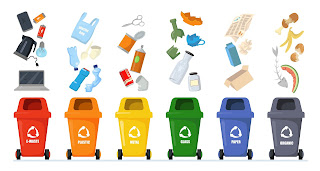The Future of Waste Management: Where Upcycling and Recycling Meet?
As sustainability becomes a defining priority for businesses and consumers, the way we handle waste is rapidly evolving. In this shift, upcycling and recycling are emerging as two complementary approaches that shape a greener future. While both methods aim to reduce waste and conserve resources, they work differently leading many to ask, is upcycling better than recycling? The truth is, the future of waste management may not be about choosing one over the other, but about finding where they meet to create maximum impact.
Understanding Upcycling and Recycling
Recycling breaks down materials into their raw components to create new products. It’s an essential part of waste management, but it can require high amounts of energy, water, and resources to process materials. For example, recycling plastic involves cleaning, shredding, and melting before it’s ready for reuse.
Upcycling, on the other hand, transforms materials in their current form into new, higher-value products. This could mean turning outdated corporate banners into reusable tote bags or repurposing old uniforms into branded merchandise. It uses less energy since materials don’t need to be broken down completely.
Is Upcycling Better Than Recycling?
The question is upcycling better than recycling depends on context. Upcycling often has a lower environmental footprint because it preserves material integrity and avoids energy-heavy processing. It also sparks creativity, giving businesses the chance to tell powerful sustainability stories that connect with customers.
However, not all materials can be upcycled effectively, and large-scale waste streams may require recycling for practical management. Recycling has the advantage of processing a wide range of materials, from paper and glass to metals and plastics, through established infrastructure.
The future of waste management likely lies in a hybrid approach using upcycling for materials that can be creatively repurposed and recycling for items that can’t.
Why Combining Both Matters for the Future
Maximized Resource Efficiency – Upcycling saves materials from being broken down unnecessarily, while recycling ensures nothing usable goes to landfill.
Lower Carbon Footprint – Reducing the need for virgin materials through either method cuts greenhouse gas emissions.
Circular Economy Growth – Together, they keep materials circulating in the economy instead of ending up as waste.
Brand and Consumer Engagement – Businesses can connect with eco-conscious customers through visible, creative upcycling projects while still meeting recycling regulations.
How Businesses Can Lead the Way
Conduct a Waste Audit – Understand the types of waste your company generates.
Identify Upcycling Opportunities – Look for materials with potential for repurposing into high-value products.
Strengthen Recycling Programs – Partner with reputable recycling facilities for materials that can’t be upcycled.
Promote Your Sustainability Efforts – Share stories about your waste management strategies to inspire customers and stakeholders.
Some innovative companies are already using this dual strategy. They repurpose branded merchandise, obsolete marketing materials, and unused corporate goods into upcycled items while recycling everything else responsibly. This approach reduces environmental impact and boosts brand image.
The Role of Innovation in Waste Management’s Future
Technological advances will continue to improve both upcycling and recycling. From AI-driven sorting systems for recyclables to advanced design tools that make upcycling more efficient, innovation will help businesses make better waste management decisions. The companies that embrace both methods will be the ones leading in sustainability, creativity, and consumer trust.
Conclusion
While the debate over is upcycling better than recycling will continue, the future of waste management shows they are stronger together. Upcycling offers creativity, energy savings, and brand value, while recycling handles a wider range of materials at scale. By integrating both approaches, businesses can reduce landfill waste, conserve resources, and contribute to a truly circular economy. The smartest move for the future? Not choosing one, but combining the strengths of both to create a sustainable, resource-conscious world.



Comments
Post a Comment